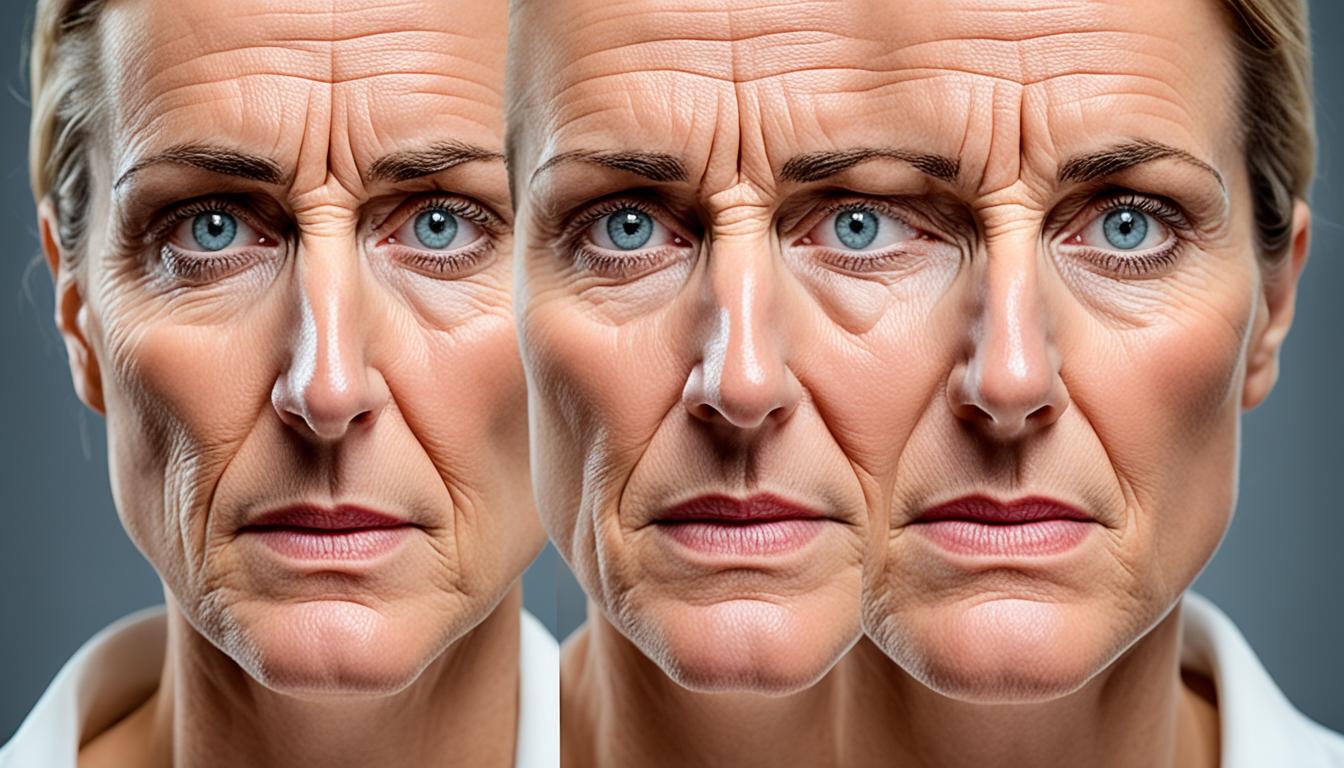Hemifacial spasm is a condition affecting half of the face. It causes muscles to twitch uncontrollably. This happens because a blood vessel presses against a facial nerve. It disrupts signals to the muscles, leading to these movements.
The main sign of this spasm is visible muscle twitching. It often starts with the eye and can spread to other parts of the face. These twitches are not painful but might get worse over time. This can be from nerve injury, tumors, or unusual structures around the face.
To diagnose this, doctors will look closely at how the muscles move. They might also use imaging tests like MRI. These tests find the pressing blood vessel and rule out other reasons for the symptoms.
There are a few ways to treat hemifacial spasm. Botox injections can ease muscle twitching by relaxing the muscles. For severe cases, surgery is an option. Here, a sponge is placed between the nerve and pressing vessel. This stops the vessel from pushing on the nerve. Some people also take anticonvulsant drugs to manage their symptoms.
Key Takeaways:
- Hemifacial spasm causes one side of the face to twitch involuntarily. This is due to a blood vessel pressing on a facial nerve.
- Doctors diagnose it by looking at the muscle movements and using tests like MRI.
- Botox, surgery, and drugs are treatment options. They can greatly help someone’s quality of life.
Understanding the Pathophysiology of Hemifacial Spasm
Hemifacial spasm happens when a blood vessel presses on the facial nerve. This makes the nerve send wrong signals to face muscles. As a result, the face twitches and spasms. There are two main ideas about why this happens: the nerve origin and the nuclear origin.
The nerve origin view thinks the facial nerve gets damaged at the pressing point. This damage causes the nerve to send mixed-up signals. It focuses on the key role of nerve damage in causing hemifacial spasm.
The nuclear origin view centers on the irritation of peripheral nerve fibers. This irritation sends bad signals to the brain’s facial nerve center. Then, that area becomes too sensitive and makes the muscles twitch. It gives us a deeper look into how hemifacial spasm begins.
The exit area of the facial nerve from the brainstem can easily get pressed on. This area’s structure and the closeness of blood vessels make it prone to compression. So, it’s a common spot for hemifacial spasm to start.
Ephaptic Transmission
Another idea, ephaptic transmission, could also play a part in hemifacial spasm. This means nerves talk to each other in the wrong way because they’re squished together. This wrong talk might make the muscle twitching worse.
Getting to know the causes of hemifacial spasm is essential to find good treatments. If we can fix the nerve issues, signal problems might get better. This could help ease the condition’s symptoms.
Effective Diagnosis and Treatment of Hemifacial Spasm
The diagnosis of hemifacial spasm starts with a careful look at the symptoms. A doctor watches the face for muscle twitches on one side. They might use tests like an MRI to find what’s pressing on the nerve.
To treat hemifacial spasm, doctors have a few choices. They often use Botox injections to stop the twitching. These shots make the muscles not move for a while, easing the spasms.
If the problem is really bad, surgery might be best. With microvascular decompression surgery, doctors put a sponge near the nerve. This reduces the pressure and the muscle spasms.
In some cases, taking medicine like anticonvulsants helps lessen the spasms. It’s also key to see the doctor regularly. They might suggest ways to lower stress or exercises to help. These steps can make life better for those with hemifacial spasm.

